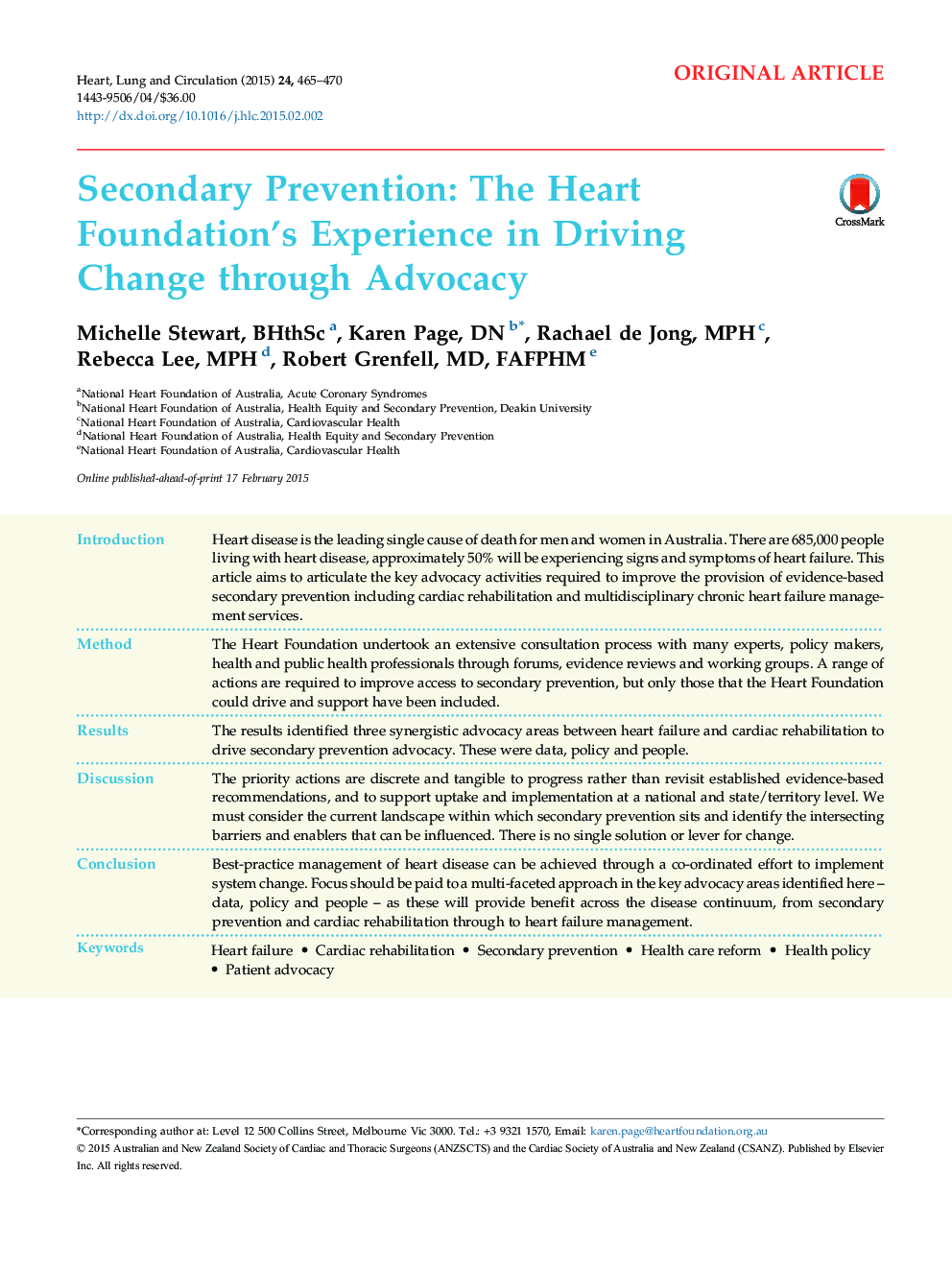| Article ID | Journal | Published Year | Pages | File Type |
|---|---|---|---|---|
| 2917363 | Heart, Lung and Circulation | 2015 | 6 Pages |
IntroductionHeart disease is the leading single cause of death for men and women in Australia. There are 685,000 people living with heart disease, approximately 50% will be experiencing signs and symptoms of heart failure. This article aims to articulate the key advocacy activities required to improve the provision of evidence-based secondary prevention including cardiac rehabilitation and multidisciplinary chronic heart failure management services.MethodThe Heart Foundation undertook an extensive consultation process with many experts, policy makers, health and public health professionals through forums, evidence reviews and working groups. A range of actions are required to improve access to secondary prevention, but only those that the Heart Foundation could drive and support have been included.ResultsThe results identified three synergistic advocacy areas between heart failure and cardiac rehabilitation to drive secondary prevention advocacy. These were data, policy and people.DiscussionThe priority actions are discrete and tangible to progress rather than revisit established evidence-based recommendations, and to support uptake and implementation at a national and state/territory level. We must consider the current landscape within which secondary prevention sits and identify the intersecting barriers and enablers that can be influenced. There is no single solution or lever for change.ConclusionBest-practice management of heart disease can be achieved through a co-ordinated effort to implement system change. Focus should be paid to a multi-faceted approach in the key advocacy areas identified here – data, policy and people – as these will provide benefit across the disease continuum, from secondary prevention and cardiac rehabilitation through to heart failure management.
